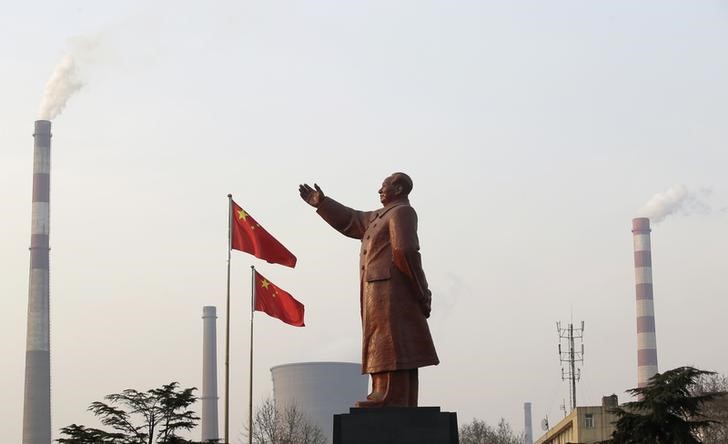 © Reuters. China shows faster pace of economic restructuring, but still relying on credit: Moody’s
© Reuters. China shows faster pace of economic restructuring, but still relying on credit: Moody’sBEIJING (Reuters) – China’s economic restructuring is picking up pace, with its manufacturing sector showing signs of a shift to higher value-added areas – a credit positive, analysts at Moody’s Investors Service said on Tuesday.
China has been cutting excess capacity in heavy industry in recent years to revive profitability in the sector and reduce high debt levels, while encouraging factories to shift to higher-value production such as robotics and aerospace under its Made in China 2025 initiative.
“If such measures lead to a reallocation of labor and capital resources that shift credit towards sectors with higher productivity growth, it will support the Chinese government’s credit quality by increasing its debt-carrying ability,” Marie Diron, managing director of Moody’s Sovereign Risk Group, said at a conference in Beijing.
But Diron cautioned that liabilities of state-owned enterprises continue to outpace economic growth, even as authorities have been making some progress in reducing risks in the financial system.
Moody’s downgraded China’s sovereign credit rating by one notch to A1 in May last year on concerns debt would continue to rise as potential economic growth slows, and the firm’s outlook on China remains broadly similar to its view from a year ago, Diron said later in an interview with Reuters.
The extent to which China was able to rein in shadow banking over the last year with economic growth remaining strong was surprising, Diron said, though China’s economy still relies on stimulus to grow as current growth rates are higher than Moody’s estimate for potential organic GDP growth.
China and the rest of Asia also continue to face external risks such as punitive U.S. trade measures, as China remains reliant on technology supplies from the U.S. and other advanced economies in the short term, according to a presentation by Moody’s at the conference.
But in the longer term, China will stay focused on developing high-tech sectors, with or without U.S. supplies, as they are key to its growth plan, said Lillian Li, vice president at Moody’s Credit Standards and Research Group.
“China has the financial and policy levers to pursue this plan, and sustained higher public-sector spending would not materially alter its fiscal strength and sovereign credit profile,” Li said at the conference.
The United States and China have threatened tit-for-tat tariffs on goods worth up to $150 billion each, as President Donald Trump pushes Beijing to open its economy further and address the United States’ large trade deficit with China.
Moody’s also expects more credit defaults in China as tightening funding conditions make it harder for some companies to refinance their debt.
Companies with weak balance sheets and those relying on short-term debt for refinancing are particularly vulnerable, said Ivan Chung, associate managing director with Moody’s Corporate Finance Group.
At the same time, risk aversion is rising as banks and investors are now more concerned about the fundamentals and liquidity of issuers.
Moody’s also said China’s banking system has entered a period of slower growth, in response to Beijing’s push to reduce regulatory arbitrage, opaque investments and other shadow banking activities.
Fusion Media or anyone involved with Fusion Media will not accept any liability for loss or damage as a result of reliance on the information including data, quotes, charts and buy/sell signals contained within this website. Please be fully informed regarding the risks and costs associated with trading the financial markets, it is one of the riskiest investment forms possible.
Source: Investing.com




























